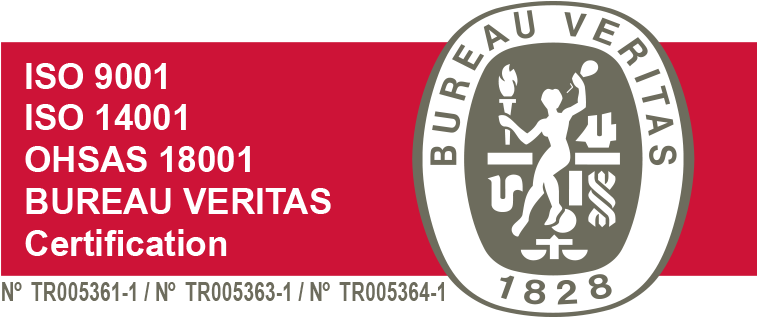Product Certificate and Label
| Name of The Product | : FARADAY |
| Active Substance | : 452,42 g/L 2,4-D 2-Ethylhexyl Ester + 6,25 g/L Florasulam |
| Formulation Type | : Suspo - Emulsion (SE) |
| Group | : O,4 + B,2 HERBICIDE |
| Environmental Impact | : Toxic for bees and fish. |
| Antidote | : No special antidote. Symptomatic treatment is applied. |
Market Presentation: 1 L - 5 L
PREPARATION OF THE PLANT PROTECTION PRODUCT TO BE APPLIED
First, the Plant Protection Product scaled on recommendation dose is mixed with a small amount of clean water in a separate container. The application machine tank is filled halfway with water. The mix is added to the tank while the mixer is running. Mixing is continued while the tank is completed with water. Mixing is continued until the application is completed. The amount of water to be used per decare should be 20-40 liters and fan jet nozzles should be used in applications. The pesticide should be used on the same day.
CALIBRATION
Calibration of the machine should be done before application. In order to determine the amount of water to be used per decare, the tank of the machine is filled with water. It is determined how much area is wetted with this water and the amount of water to be used in the application is calculated.
CLEANING OF THE APPLICATION MACHINE
Safely empty the storage of the application machine immediately after the application is completed. After filling the tank with clean water, start the mixer and spray system to ensure that all parts are washed. Do not wash near water sources. Do not drain washing water and waste into water sources.
MISCIBILITY
It is not recommended to be mixed with other plant protection products.
USAGE OF PLANT PROTECTION PRODUCT
The best effect in FARADAY applications is obtained when the true leaves of the weeds are seen, are in rapid growth and are not covered by grains.
Grain (Wheat, barley): It is used in the period from the period when planted seed germinates to the end of the tillering period of the grains. The desired effect cannot be obtained and is not recommended if it is used after the bolting period. Do not apply if there is an expectation of frost at night or after frost.
Corn: It is used in the period when the corn plant has 3-5 leaves and the weeds have completed their emergence. If the average daily temperature rises above 15 °C during and after the application (7-10 days), the broad-leaved cultivated plants around it may be damaged. Therefore, it is not recommended to be used in the Mediterranean, Southeastern Anatolia and Aegean regions where the temperature is high during this period.
RESISTANCE MANAGEMENT
FARADAY named plant protection product, according to its mechanism of action, is a herbicide classified as Group O,4 + B,2. Repetitive applications of plant protection products with the same mechanism of action, encourages the development of resistance. Hence, do not exceed the total number of applications recommended during the same season of FARADAY to delay development of resistance. In cases where the application needs to be repeated, take care to use plant protection products with different mechanisms of action (Group O,4 + B,2 External).
| PLANTS AND HARMFUL ORGANISMS WHICH IT IS USED | ||
| PLANT NAME | NAME OF HARMFUL ORGANISMS | USAGE DOSAGES |
|
Wheat Barley |
Summer pheasant's-eye (Adonis aestivalis) Italian bugloss (Anchusa azurea) German madwort (Asperugo procumbens) Corn-gromwell (Buglossoides arvensis) Leaved mustard (Boreava orientalis) False flax weed (Camelina rumelica) Barbarea verna (Cardaria draba) Forked chickweed (Cerastium dichotomum) Flixweed (Descurainia sophia) Geraniaceae (Geranium stepporum) Hypecoum (Hypecoum pendulum) Woad dyer's woad (Isatis tinctoria) Thrace mustard (Neslia apiculata) Wild mustard(Sinapis arvensis) Kochia (Sisymbrium altissimum) Narbon bean (Vicia narbonensis) Garden vetch (Vicia sativa) |
50 mL / da |
|
Wheat Barley |
Field chamomile (Anthemis fumariifolia) Italian thistle (Carduus pycnocephalus) Field larkspur (Consolida regalis) Rough corn bedstraw (Galium tricornutum) Narrowleaf knotweed (Polygonum bellardii) Field buttercup (Ranunculus arvensis) Thistle (Silybum marianum) Finger speedwell (Veronica triphyllos) |
60 mL / da |
|
Wheat Barley |
Russian knapweed (Acroptilon repens) Tree of Heaven (Bifora radians) Cornflower (Centaurea depressa) Amantia Phalloides (Cirsium arvense) East ballıbabas tree (Wiedemannia orientalis) |
70 mL / da |
| Corn * |
Velvetleaf (Abutilon theophrasti) Red-rooted pigweed (Amaranthus retroflexus) Birthwort (Aristolochia maurorum) Goosefoot (Chenopodium album) Stinking goosefoot (Chenopodium vulvaria) Low cornflower (Centaurea depressa) Cleavers (Galium aparine) Beach morning-glory (Ipomoea stolonifera) Marsh samphire (Salsola kali) Poisonberry (Solanum nigrum) Rough cocklebur (Xanthium strumarium) |
70 mL / da |
| Corn * |
Russian knapweed (Acroptilon repens) Field bindweed (Convolvulus arvensis) |
80 mL / da |
(*) It is not used in hybrid corn seed production and sugar corn cultivation.




